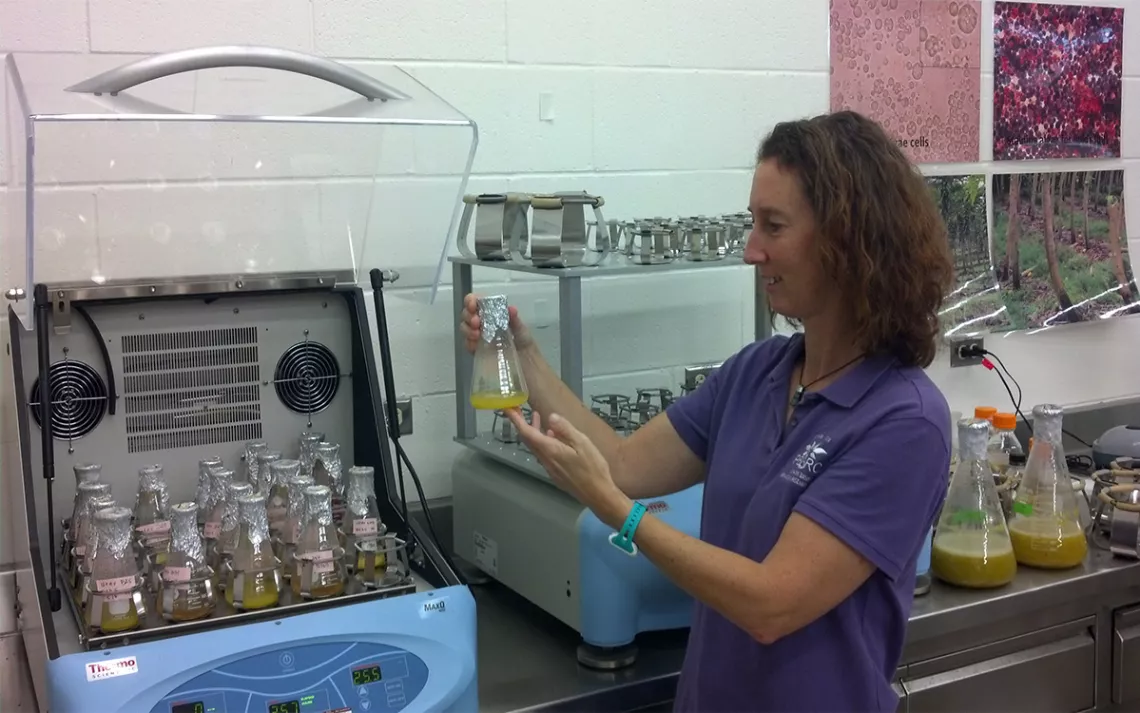Could Papayas Help Hawai'i Become Energy Independent?
Researchers are turning the tropical melon into fuel for biodiesel

Photo courtesy of Lisa Keith
Papayas are big business in Hawai'i. In 2016, the islands produced nearly 20 million pounds of the tropical melon, valued at an estimated $10 million. The Hawaiian papaya is also highly controversial. After the papaya ringspot virus decimated the island’s crop three decades ago, much of the fruit grown there today has been genetically modified to be resistant.
For Hawaiian farmers, selling the papayas can be difficult. Countries are often reticent to import genetically modified crops. Farmers also face an uphill battle because of the high cost of imported fertilizers. But even more problematic is waste. Approximately a third of the Hawaiian papaya crop is discarded because it’s bruised or misshapen. Farmers throw out these otherwise saleable crops when margins are already thin.
Lisa Keith, a plant pathologist with the USDA in Hilo, Hawai'i, may have a solution. Keith and her team of researchers have been gathering leftover papayas from local packing houses and turning them into a fuel that’s used to produce biodiesel. It’s a surprisingly simple process that includes adding algae to large tanks that contain a sterile pureed papaya solution, where a process called heterotrophic growth takes place—in the absence of sunlight, algae feed on the sugar in the papaya. When the algae becomes starved of nitrogen after depleting the nutrients in the puree, it stimulates lipid production, which causes the lipid cells to balloon up with oil in just under two weeks’ time. These oils can be used for biodiesel production after the glycerol present in the cells is extracted.

Sign up to receive Sierra News & Views
Get articles like this one sent directly to your inbox weekly.
With this action you affirm you want to receive Sierra Club communications and may vote on policy designated by the Sierra Club Board.
The entire process takes less than a month. It’s an entirely waste-free endeavor because, Keith says, the leftover algae can be added to fish meal, and the glycerol can be added to feedstock. This makes the algae/papaya combination a practical solution to another major island issue. In Hawai'i, almost 90 percent of the island’s energy is imported. Producing local, sustainable energy through solar, wind, and other methods like biodiesel makes economic sense for the islands, which have set a 2045 deadline for producing 100 percent of their energy from sustainable sources. What’s more, biodiesel production could be another reliable stream of income for farmers struggling to survive in a difficult market.
The main obstacle that Keith and her team have encountered in their attempt to scale the energy source has been oil extraction. “Removing the oil from the algae cells is still a challenge,” says Keith, and they’ve yet to come up with a means for extracting oils from algae cells at an economically sustainable rate. But, she says, “This is an ongoing problem with the industry as a whole.”
Currently, there are two main methods for oil extraction: mechanical and chemical. Often they’re combined, depending on the type of algae used in production. Mechanical involves physically crushing the cells similar to crushing olives or soybeans to extract the oil. The other involves using chemical solvents to disrupt the cells.
In the lab, Keith and her team are using a combined method of mechanical disruption and the use of solvents. Algae are added to test tubes and the samples are mixed at high speeds to break open the cells. The oil is then extracted by adding hexane, a chemical solvent often used in food processing. The hexane evaporates, leaving behind the algae oil.
Even though the project isn’t yet fully scalable, Keith says that the research is promising. She’s currently working with the Hawai'i Department of Agriculture’s Agribusiness Development Corporation and Big Island Biodiesel to optimize the complicated process so that it can become a viable energy source on the island. Production has increased much faster than she thought it would.
In the future, her team plans on researching other Hawaiian crops that can be used in biodiesel production, like Okinawan sweet potato, guava, banana, and cacao pulp.
While algae biodiesel production isn’t going to make Hawai'i energy independent in the short term, it’s a big step in the right direction—a win for farmers looking for another viable stream of income and a win for those sick of the high cost of unsustainable energy on this isolated archipelago.
 The Magazine of The Sierra Club
The Magazine of The Sierra Club



